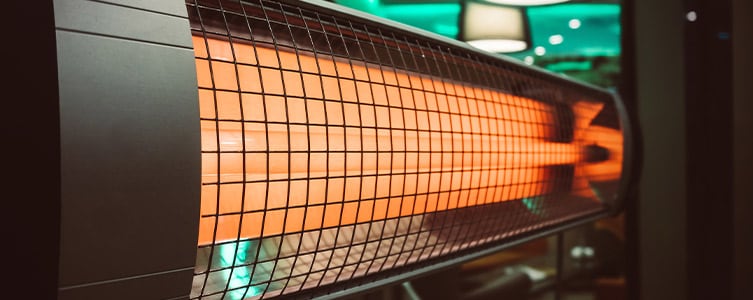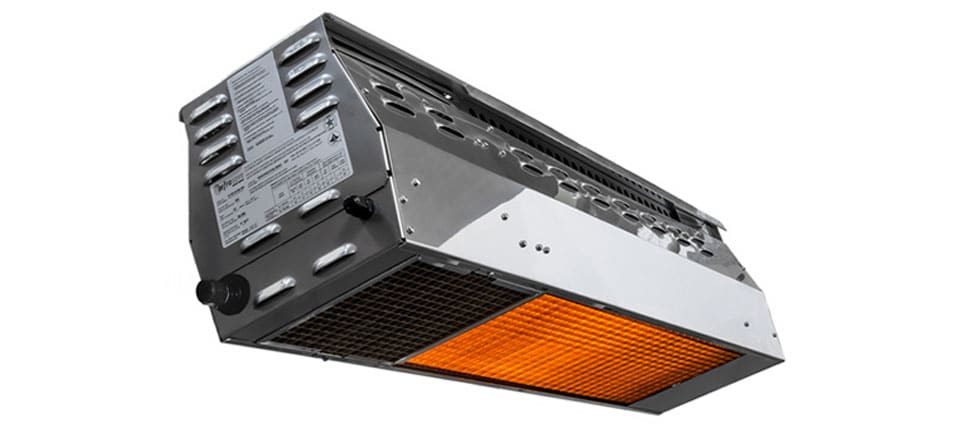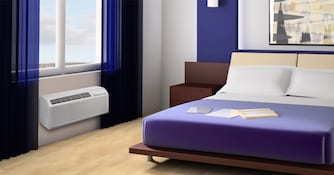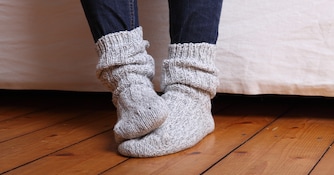
How to Pick a Patio Heater for Your Outdoor Space
If you live in a state with chilly autumn and winter seasons, then you’ve probably complained at some point about not being able to do much outside for five months out of the year. For example, you can’t have those fun patio parties or a relaxing evening gazing at the stars with your significant other.
The cold can also impact the economy. If you’re a restaurant owner, you lose out on outdoor dining revenue because no customer wants to shiver during dinner.
Fortunately, there’s a way around all of this. Outdoor infrared patio heaters are a relatively inexpensive way to keep guests and customers warm and comfortable outside your home or business.
How Infrared Patio Heaters Work
Anyone who has ever put a space heater outside knows that it’s a waste of time and energy. Space heaters use convection to heat the air, which quickly blows away. You would never get them to heat anything effectively outside, but you’d spend a lot of money trying.

That’s why outdoor patio heaters utilize infrared technology. Infrared heaters use radiant heat rays to instantly warm up objects in their path, including your body. It's the same way the sun warms the earth—think of the warmth you feel when you’re in direct sunlight, even if it’s the middle of January. Like the sun, infrared heats you up directly.
Because patio heat lamps don’t heat the air, you won’t lose warmth from the space. As a result, you can enjoy outdoor entertainment later into the season. In fact, most outdoor heaters work well down to 30 degrees Fahrenheit.
How to Heat a Patio
Residential and restaurant heat lamps come in electric and natural gas/liquid propane models.
Liquid propane patio heaters run on small, replaceable propane tanks that are affixed to the unit. Alternatively, some can be connected to a large propane tank on the property. These heaters are favored most for their portability, but of course, you must replace the propane tank.

Natural gas patio heaters are permanently connected to a gas line in your home or business, which means they have a constant fuel supply that doesn’t need replacement. If you already have an accessible gas line near your outdoor space, installation will be relatively simple for your professional contractor. Otherwise, they’ll need to run a new gas line, which will increase installation costs. In many cases, natural gas should be less expensive to run than liquid propane over time.
Electric patio heaters run completely on electricity and avoid the hassle of replacing propane tanks or running a gas line. They do need to be hardwired, however, so you will need an electrician to install them. Many come in 120V, 208V, 240V, 277V, and 480V options.
Patio Heaters Types
Everyone’s outdoor space is different and the design matters. For example, if you’re going for a light, Mediterranean vibe on your Greek restaurant’s outdoor patio, you don’t want a large portable heater bearing down on customers to ruin the vibe. Instead, you might opt for a flush-mounted type.

Portable Outdoor Heaters
If versatility is your priority, then a portable, parasol infrared heater is your best bet. These units resemble tall lamps and can be moved right where the heat is needed. Maybe your back patio is being renovated so you want to move to the front patio. Or, maybe one customer is particularly cold while the other doesn’t mind as much.
Portable, free-standing outdoor heaters give you the flexibility to adapt to the current situation. Plus, since these run on liquid propane, there are virtually no installation costs, making them an affordable option.
Mounted Outdoor Heaters
If permanent heat supply and an unobtrusive design are your priority, then go with a mounted outdoor patio heater. These units affix to a wall or ceiling and can be flush-mounted so no one notices them. They are perfect if you have minimal floor space. Custom colors allow them to blend in with most design aesthetics.
Mounted units run on natural, propane, or electric and require a full professional installation in all cases. Although setup will cost more than with a portable unit, if you’re in it for the long hall, mounted heaters are worth the investment.
Sizing a Patio Heater
Like with any other heating equipment, you’ll need to properly size your infrared patio heater or you’ll have freezing guests on the opposite side of the space. Gas models come in a wide range of BTU outputs and electric units have multiple voltage options.
Factors to consider when sizing include room size, heater position, and the number of required heaters. Don’t guess when sizing. Also, don’t Google the answer because you might end up with more guesses. Infrasave, a leading patio heater manufacturer, offers free sizing and design worksheets.

Patio Heater Safety
When using outdoor patio heaters, especially gas-powered ones, it’s important to remember that you’re dealing with combustibles. Protect your guests and customers by heeding these safety guidelines:
- Make sure your installer properly vents your heater to prevent buildup of exhaust gases around people.
- Create necessary clearance between your heater and items that can catch fire. The owner’s manual (found on the product page) will list these clearances.
- Do not put any object right next to the heater.
- Never use a patio heater under a covered patio without maintaining proper ventilation and clearance space.
- Read your owner’s manual and follow all safety measures.
Enjoy the Outdoors Year-Round
With patio heaters, you can get fresh air 12 months out of the year. Homeowners can host awesome parties and restaurateurs can increase revenues. Besides these main applications, outdoor infrared heaters are also great for hotels, nightclubs, carnivals, and more.
Don't let Old Man Winter keep you or your business hostage. Break free with an outdoor patio heater!





